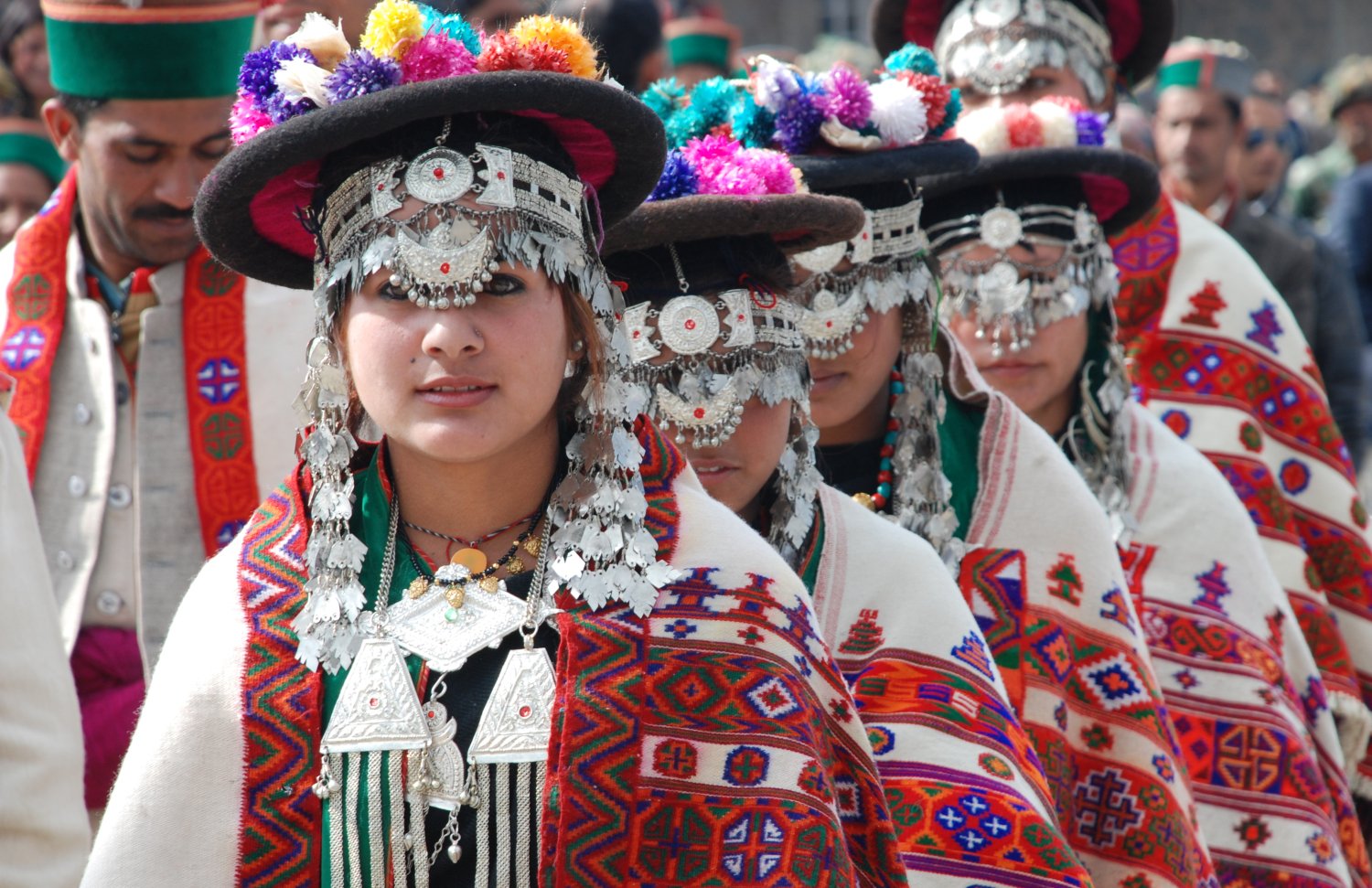Kullu Dussehra
Where : Kullu When : November or October Special Attraction : Duration of Festival : 7 days Dussehra celebration in Kullu is not at all similar to celebration in other parts of the country as no figurine of Ravan or Kumbhkarna is burned. The traditional Kullu Dussehra is organized in the month of October and gets off a spectacular start with the traditional procession of Lord Raghunathji. The Rath Yatra of the idol of Lord Ragunath is led by the Kullu Raja and village deities, and is known as the running of the Gods. Lord Raghunathji saddled on a gaily attired chariot is pulled from its fixed place in Dhalpur Maidan to another spot across the Maidan by big ropes. The pulling of ropes is regarded sacred by the local people. All the deities from various temples are brought from the temple to the foreground in order to pay homage to Raghnathji. Here one can see one of the most spectacular processions in the country as well as the state; it attracts a huge number of tourists. Celebration commences on ‘Vijaya Dashmi’ day; over 250 people gather here and camp at Dhalpur Maidan for a week in order to pay obeisance to Lord Raghunathji, the presiding deity. The festival is celebrated with complete fevours for a week. This Hindu festival is celebrated all over India to mark the triumph of good over evil (Lord Ram over Ravan). On the last day of the festival, the chariot of Raghunath ji is taken to the bank of the river Beas. Then a heap of wood along with grass is set on fire, symbolizing the burning of effigies of Ravana, the demon of Lanka, and is followed by the sacrifice of chosen animals.
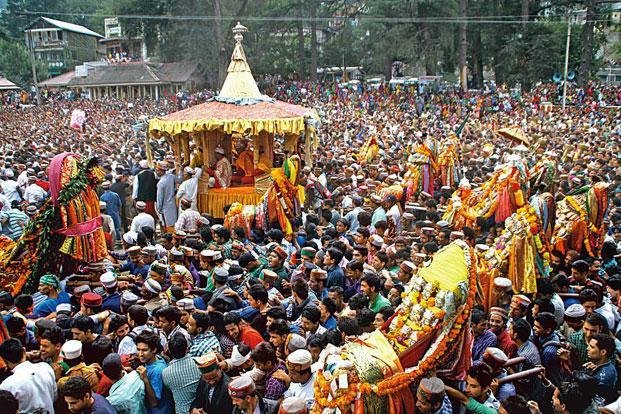
Lohri /Maghi
When : 13th January Where : All over Himachal Special Attraction : Bonfire, dancing acts Duration of Festival : 1 Day Lohri is a feisty festival celebrated by the people of Himachal Pradesh, Haryana and Punjab. In the villages of Punjab, Lohri is celebrated as a ceremonial ritual to jumpstart the harvesting of Rabi crop. Lohri festival is famous by the name of Maghu as well because it coincides with the onset of 'Magh' month which commences just a day before. On this festival, people dress in vibrant clothes and prepare dance performances. Children sing folk songs and go door to door, especially to the newly married couples consciously to collect funds for community bonfire. Around dusk, people from different households come together and lit a bonfire. People throw pop cans and puffed rice in the flames as a way of offering sacrifice to God so that they get blessed with a rich harvest. People from different communities come together for the grand holy celebration. On the whole, Lohri celebrates oneness and encourages people to rise above personal differences.

Himachal Winter Carnival
When : 2nd January to 6th January Where : Manali Special Attraction :Skiing Championship, Himachali Food Festival, Craft Bazaar, Local Band Competition, Folk Dances, Street Plays, and Adventure Sports. Duration of Festival : 5 Day the culture of Himachal Pradesh, a winter carnival is organized every year in Manali. Himachal Pradesh started the trend of Winter Carnival back in 1977 and now after almost three decades the festival has become bigger and better! During this festival, the ski slopes of Manali are invaded by adventure enthusiasts. Another major highlight of the festival is the beauty contest known as the "Winter Queen" and "Mr. Manali" A procession is also organized from the Hadimba Devi temple. The complete stretch of Manali mall road looks like a carnival. Right from folk dance to entertaining skits, a lot of things can be explored in this festival. People on a tour to Himachal Pradesh can't afford to miss the Himachal Winter Carnival. Other than enjoying the Himachal Winter Carnival in Manali, tourists have an opportunity to visit The Manacle Gompa, Vashisht Springs, Jagatsukh, Manu Temple and Hadimba Temple.
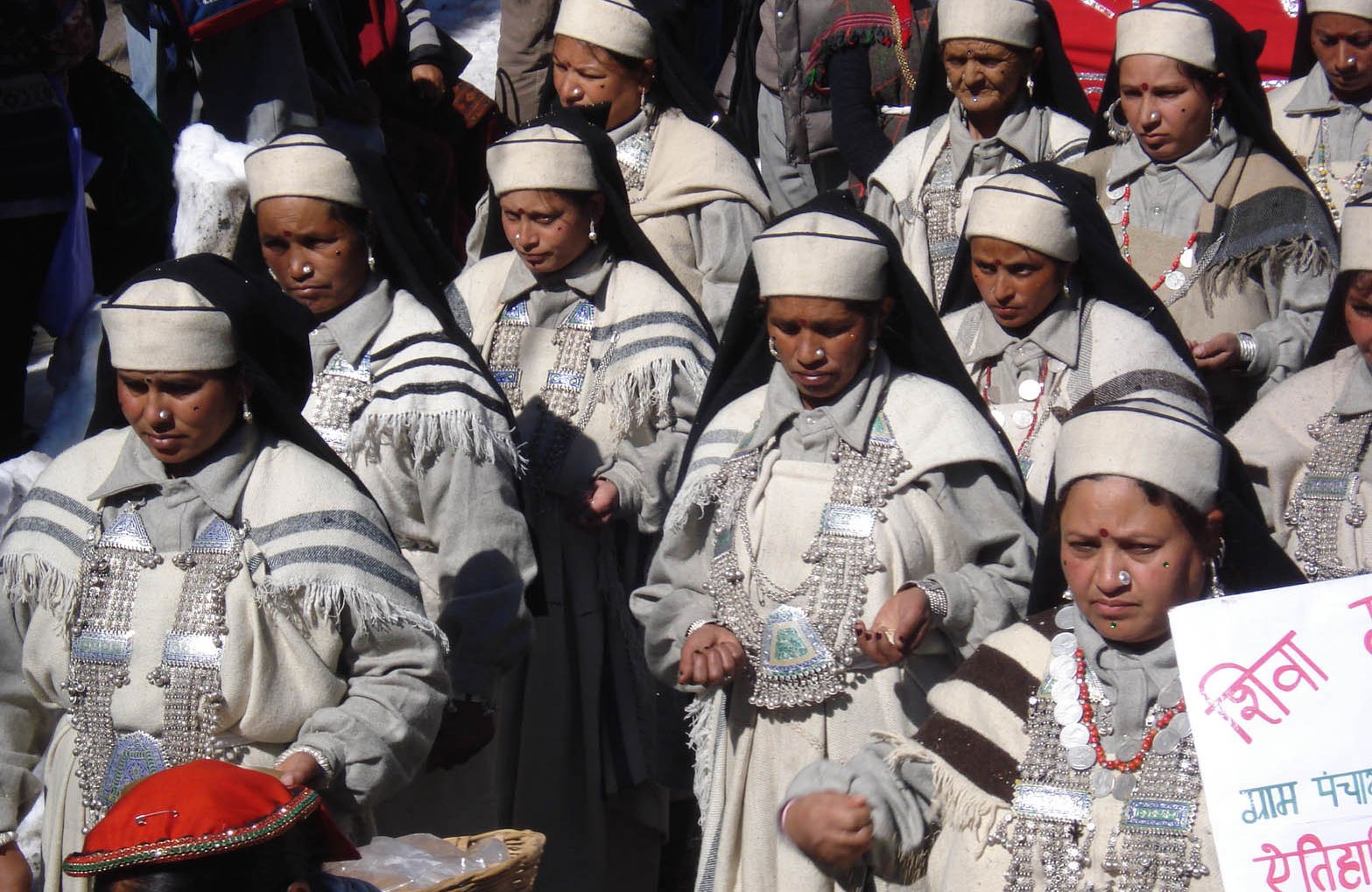
Losar Festival
When : Between the months of January end and March Where : Throughout Himachal Special Attraction :Mask Dance. Duration of Festival : 15 days The New Year celebration of Tibetans, Losar festivals takes place in the first week of the first lunar month (February), with performances of Tibetan opera and prayer ceremonies being held at various monasteries. A day prior to the New Year, Nyi Shu GU is celebrated which is a ritualistic tradition. Special noodles called Thukpa Bhatuk are consumed on this day (Nyi Shu GU). During this festival, the local deity is worshipped. It is also believed that the Losar festival originated during the Pre-Buddhist period in Tibet when Bon was the religion followed in the country. The First day of the festival is known as the 'Lama Losar' or the festival of the Guru and His Holiness The Dalai Lama', the spiritual head of the Tibetans is worshiped on this day. During the festival, Chaam dance is performed which features elaborated mask and costumes. The dance presents the story of how the cruel Tibetan king, known by the name of Langdarma, was killed in the 9th century, leading to the ultimate triumph of good over evil. The weird masks used in the dance have also earned it the name the 'Devil Dance'.

Doongri Festival, manali
When : May Where : manali Special Attraction :Folk dance and music performances by the local artist. Duration of Festival : 2 Day Doongri festival or Hadimba Devi fair is celebrated in Kullu in honor of and to celebrate Hadimba Devi’s (wife of Bhima) birthday. A huge fair is organized on this day; during the festival one can catch glimpses of dance and musical performances by local artists. Since the festival is celebrated on ‘Basant Panchami’, one can see colourful flowers blooming on Kullu valley. Moreover, little colorful kites also cover the skies to mark the spring festival, termed as “Basant Panchami.” Freshness, aroma, and vibrancy of flowers all around the valley gives the tourist the most blissful time of their lives.
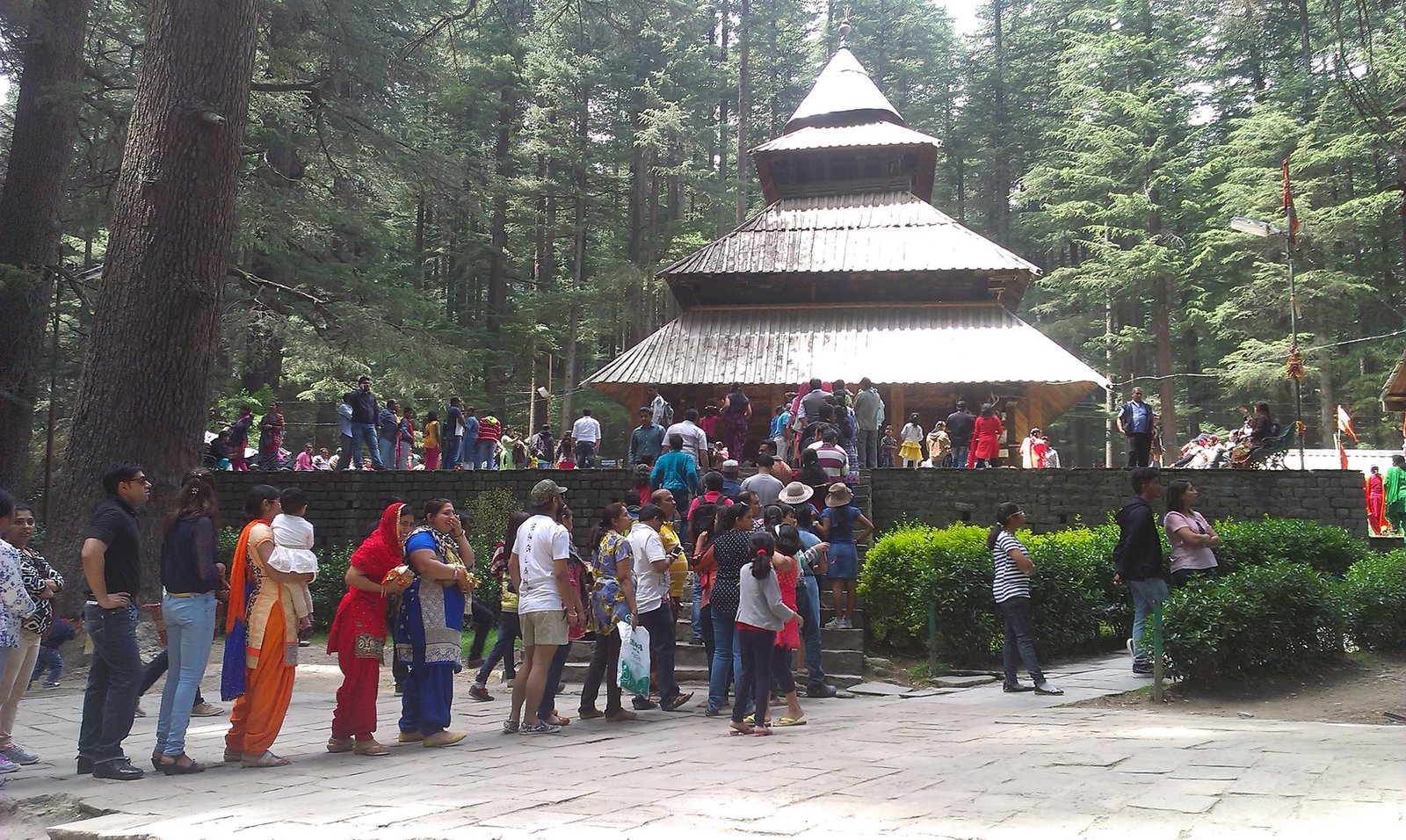
Mandi Shivaratri Fair
When : February or March Where : Mandi Special Attraction :Folk music, dance, trade of general commodities. Duration of Festival : 5 Days A grand celebration called International Maha Shivratri Festival is organized by Mandi. Since the temple is home to 81 temples of Lord Shiv, Mandi sees footfall of more than 200 devotees on the day of Shivratri. The festival is also known as a Mandi Shivratri festival. During the festival, a colorful procession called Shobha Yatra is organized as per which various deities are carried in their chariots to Mandi to pay homage to Madho Rai and the Raja. As per the old ritual, it is mandatory that every deity who visits Mandi should visit Madho Rai temple first in order to pay respect to Lord Vishnu and then honor the ruler. Consequently, the deity pays obeisance to Lord Shiv at Bhootnath temple where the main festival is organized. The entire procession is swayed by drums and folk music to indicate happiness. Shivratri is the time when local businessman indulge in trading activities of products like walnut, ghee (butter oil), honey opium and general merchandise. On the second day, Jagaran is organized. On this occasion, a guru and his disciple make prophesies for the following year. On the last day, prayers are chanted and ‘chadars’ are offered in the temple.
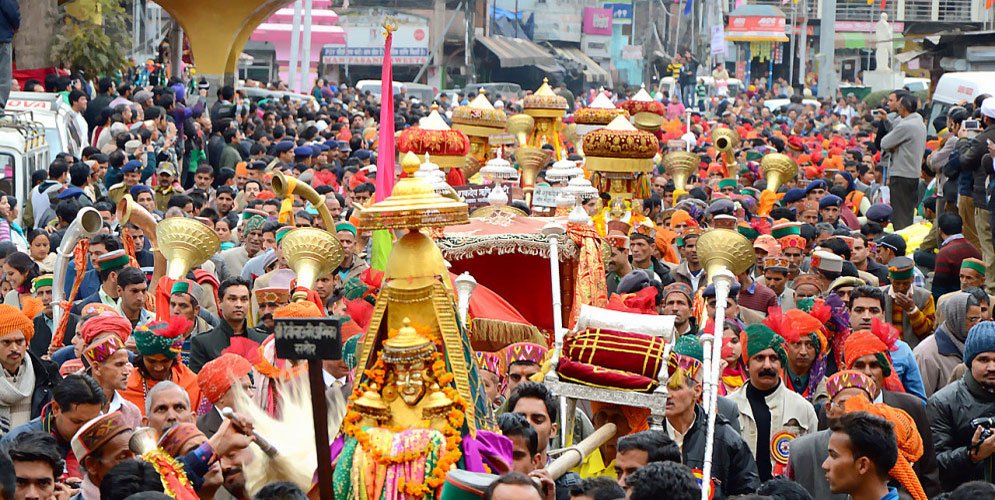
Spring Festival
When : Kullu Where : 28th to 30th April Special Attraction : Cultural performances. Duration of Festival : 3 Days Spring festival, which is also called Pipal Jatra or Basantotsav, takes place in Kullu from 28th to 30th April. The tradition of celebrating the festival began long back when kings used to rule Himachal Pradesh. The festival marks the beginning of the spring season in the valley. It is said that during the bygone era, rulers used to sit under the papal tree to enjoy the traditional dances. As the time rolled by, the festival has lost much of its glory and glitters. During the festival, cultural performances are organized by Kala Kendra in amphitheatres. Cultural groups and reputed artists come from all over India to perform in the festival.
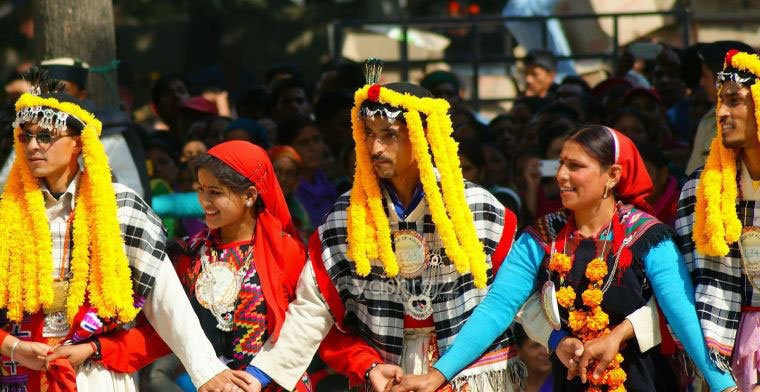
Ladarcha Festival / La Darcha Fair
When : 3rd week of August Where : Kaza, Spiti Special Attraction :Folk dance, cultural programmes, special Buddhist sermons (large community meals). Duration of Festival : 3 Days If tourists want to catch the glimpses of vibrant hilly culture of Himachal Pradesh then they should attend the La Darch festival. The festival is organized to strengthen the commercial bond between India and Tibet. The fair attracts many regional traders, local inhabitants, and tourist from across the world. The festival was abandoned in the year 1962 because of China war, but it was started again in the year 1980. The main attraction of the festival are folk song and dance performances by artists from the Tibetan Institute of Performing Art, Bhutan, Ladakh, Sikkim, Kinnaur and Nepal. Traders from Kullu, Lahaul and Kinnaur districts gather here during this festival. Many items are traded like accessories, utensils, apparel, jewelry, metalwork, plastic goods, craft, dry fruits, grains and even livestock- yaks and pure blood horses. The festival is organized with a purpose to promote friendship and cultural understanding amongst the people living in Himalayan region. Special attractions of the festival are Chaam and Buchan dance, special Buddhist sermons and archery competition. The calm and serene valley of Kaza is transformed into a bustling carnival during the festival.
